This article was co-authored by Sari Eitches, MBE, MD. Dr. Sari Eitches is an Integrative Internist who runs Tower Integrative Health and Wellness, based in Los Angeles, California. She specializes in plant-based nutrition, weight management, women's health, preventative medicine, and depression. She is a Diplomate of the American Board of Internal Medicine and the American Board of Integrative and Holistic Medicine. She received a BS from the University of California, Berkeley, an MD from SUNY Upstate Medical University, and an MBE from the University of Pennsylvania. She completed her residency at Lenox Hill Hospital in New York, NY and served as an attending internist at the University of Pennsylvania.
There are 18 references cited in this article, which can be found at the bottom of the page.
wikiHow marks an article as reader-approved once it receives enough positive feedback. This article received 14 testimonials and 90% of readers who voted found it helpful, earning it our reader-approved status.
This article has been viewed 529,386 times.
You may think only about 100 people get headaches every day, but reality is, over millions of Americans suffer regularly from headaches of all kinds, and headaches are the number one excuse for time missed from work.[1] Most headaches fall into one of three categories—tension headaches, migraines, or cluster headaches.[2] Tension headaches are usually caused by muscle and posture problems, and can be made worse if you are stressed, anxious, tired, depressed, or there is a lot of noise or light.Migraine headaches are not necessarily worse than tension headaches in terms of pain, but instead tend to be concentrated on only one side of your head, and can be made worse when you move, talk, or cough.Cluster headaches are defined as pain that starts (usually) after you’ve fallen asleep, first at a lower intensity and increasing to a peak that can last for several hours. Regardless of which specific kind of headache you may suffer from, there are several trigger points on your head, neck, eyes, and upper back that, when massaged, can offer you relief from your existing headache.
Steps
Fixing the Underlying Problem That’s Causing the Headache
-
1Start a headache journal.[3] In order to help you try to narrow down what the underlying causes of your headaches may be, you can keep a headache journal. You should write in your journal every time you experience a headache, and track the following items: [4]
- When the headache occurred.
- Where the pain was on your head, face, and/or neck.
- The intensity of the headache. You could use a personal rating scale from one to ten where you’ve defined each level based on your personal experience.
- What activities you were involved in when the headache started, including where you were.
- A note on how well you slept the night before you experienced the headache.
- A note on what you ate, drank, heard, or smelled in the 24 hours leading up to the headache.
- A note on how you were feeling before the headache started.
- Any other points that you may find useful.
-
2Setup your workstation to be ergonomically correct. Uncomfortable and improper furniture (such as your desk, chair, keyboard, computer monitor, mouse, etc.) can cause your body to be positioned badly for long periods of time. This bad posture can cause all sorts of long-term muscle problems, which in turn cause headaches. You can either rearrange your office furniture on your own, or employ a specialized company to do it for you.[5]
- You should never have to turn your head, or look up or down, when looking at your computer monitor. It should be directly in front of you, a smidgen below eye level. If your monitor’s stand won’t allow you to move it to the proper level, use books, boxes, a short shelf, or whatever else you have around that can support the monitor.
- You should not have to reach far to access your keyboard and mouse. You should be able to comfortably rest your arms on your chair’s armrests while your hands touch both the keyboard and the mouse.
- When you sit in your office chair, no part of your body should have to reach anywhere in order to sit in a relaxed position. Your legs should be at 90-degree angles and your feet should be flat on the ground. You arms should be at 90-degree angles with your arms or wrists being able to rest on either the armrests or desk. You should be able to lean back comfortably, with proper lumbar support. You should never sit forward on your chair with your feel on the castors! In fact, it’s best if your chair isn’t able to move around on wheels.
- You should never hold a phone between your shoulder and ear. Use the speakerphone, headset, or a bluetooth device to speak on the phone if you need your hands free.[6]
Advertisement -
3Use pillows and mattresses that properly support your body. Your pillow should allow your spine to remain straight whether you’re lying on your back or on your side. Don’t sleep on your stomach. Your mattress should be firm, especially if you have a sleeping partner. If your sleeping partner is heavier than you, you need to make sure your mattress doesn’t dip so much that you’re rolling into him or her. If this is happening, you’re probably unconsciously bracing yourself while you sleep to prevent yourself from rolling.[7]
- If you aren’t sure if your mattress is firm enough, try sleeping on the floor or on a camping mattress for a couple of days. If you find that you get a better night’s sleep on the floor, your mattress is nowhere near firm enough.
-
4Treat your muscles with respect. Lift with your legs and not your back![8] Take frequent breaks when you’re in the same position for a long period of time. Purposely relax your muscles and take several deep breaths every now and again. Don’t clench your jaw.[9] Don’t carry your purse or backpack on one shoulder, wear them across your body (for purses) or on both shoulders (for backpacks). Wear only properly fitted shoes with arch support. Minimize wearing high heels. Use lumbar support on any chair or seat that you sit in for longer periods of time (like your car, work, dining chair, etc.).[10] Make sure your eye glass prescription is up-to-date and that you’re not straining to see your book or monitor.[11]
-
5Take a multi-vitamin. The food we eat every day does contain some required vitamins and minerals, but it is highly unlikely that you’re getting all the needed vitamins and minerals, in the right quantities, on a daily basis. A good multi-vitamin, or a combination of more than one individual vitamin, will help ensure you’re getting what you need. Doctor’s recommend ensuring your getting enough vitamin C, B1, B6, B12, folic acid, calcium, magnesium, iron, and potassium.[12]
- If you are on other medications, check with your doctor before selecting a multi-vitamin.
-
6Stay hydrated.[13] If you’ve ever talked to a doctor, nurse, nutritionist, massage therapist or other practitioner, you’ve probably been told to drink more water at some point in your life! In general an adult should drink eight glasses or two quarts of water per day. And that amount should be increased if your exercising or if it’s really hot and you are sweating.[14]
- It can be really hard to consume the recommended amount of water, especially if you’re busy and always on the go. If you’re having trouble, force yourself to carry a reusable water bottle with you everywhere you go and refill it at every opportunity. Always have it within reach and always give in to the temptation to take sip!
-
7Adjust your caffeine intake. Most people don’t like being told they have to cut back on the amount of caffeine they consume! And ironically many headache medications include caffeine as an ingredient. This is because caffeine can help a headache initially, but if you consume too much on a daily basis, the caffeine actually causes more muscle tension and other internal problems. Try to stick to the equivalent of two eight-ounce cups of coffee per day. This includes anything you consume that has caffeine, including coffee, tea, pop, medications, and some chocolate.[15]
-
8See your doctor to discuss specific emotional or physical problems that may be causing headaches. This may include emotional problems like depression or anxiety, and physical problems like sleep problems, infections, hormone imbalances, thyroid function, blood glucose levels, and more.[16] Your doctor will be able to assess, and if required, run laboratory tests to determine if you have any of these underlying problems and then develop a treatment plan specifically for you.
Massaging the Trapezius Muscles
-
1Find your trapezius muscles. You have two trapezius muscles, one on either side of your spine, in the shape of a triangle from the top of your neck to your shoulder to the middle of your back. The three parts of the trapezius muscle are called the upper, middle and lower trapezius muscles.[17]
-
2Work the trapezius muscle while lying down. To do this, lie on your back with your knees bent. Place a tennis ball under your back, about one inch out from your spine. Start at the top of your back and work your way down. Lie down on the tennis ball for eight to 60 seconds and then move it lower. Go down as far as your upper pelvis, and remember to work both sides of your back.[18]
-
3Perform the trapezius pinch. This sounds worse than it feels! Place your elbow and lower arm on a counter or table so they’re supported. Use the opposite arm to pinch the upper trapezius muscle between your neck and shoulder. Hold for eight to sixty seconds and then do the opposite side. Don’t dig your fingers into your shoulder, just grasp the muscle itself.[19]
-
4Do the trapezius stretch. Lie on your back. Start with your arms down by your sides. Move your arms so your upper arms are at a 90-degree angle to the floor, and your lower arms are at a 90-degree angle to your upper arms. Then lower your hands to touch the floor behind your head. Stretch your arms out straight above your head with your palms facing the ceiling. Then move your arms downwards until your upper arms are at a 90-degree angle to your body. Repeat three to five times.[20]
-
5Stretch your pectoralis muscles. While the pectoralis isn’t the trapezius, stretching it still helps your trapezius. For this stretch you’ll need to stand in an open doorway, or beside the corner of a wall. Raise the arm beside the doorway or wall so that the part from your hand to elbow is lying flush against doorway or wall. Your palm should be lying on the doorway or wall. Move the leg on the same side of your body one step forward. Turn your body out from the doorway or wall until you can feel the stretch just below your collar bone. You can move your arm higher and lower to work different parts of the same muscle.[21]
Stretching the Posterior Neck Muscles
-
1Find your posterior neck muscles. There are at least half a dozen specific muscles in this area on the back of your neck, between the base of your skull down to your shoulder blades. Tension in this specific area of your body is probably responsible for the vast majority of headaches. [22]
-
2Work the muscles at the base of your skull. Lie on your back with both hands behind your head. One hand should cradle the other hand. Put a golf ball in the palm of the top hand. Position your hands and the golf ball such that it’s to the side of your spine, not on your spine, then rotate your head to the side to move the golf ball. The only time you have to move your hands is to move the golf ball further down your neck. Once you’ve massaged one side of your spine, move the golf ball to the other side and repeat.[23]
-
3Perform posterior neck stretches. You can do these stretches while sitting down or even in the shower. Sit up straight and put your hands behind your head. Use your hands to gently pull your head forwards until you feel the muscles stretching. You can also use your hands to pull your head forward and to both sides by about 45 degrees. Then put one hand on top of your head and pull your head towards that side of your body until you feel the stretch. Repeat with the other hand on the opposite side.[24]
-
4Stretch your neck muscles while lying down. Lie on your back on the floor. Bend your knees upwards and put your left hand, palm down, under the base of your spine. Put your right hand on top of your head. Use your hand to pull your head to the right, while looking at the ceiling, until you feel a stretch. Then use your hand to pull your head towards the right again, but this time turn your head about 45 degrees so you’re looking at the wall on your right. Finally turn your head 45 degrees to the left, so you’re looking at the wall to your left, but use your hand to pull your head back to the right. Repeat the whole process on the left side of your body, using your left hand on your head.[25]
Manipulating the Temporalis Muscle
-
1Find your temporalis muscle. Headaches caused by the temporalis muscle are very common. The temporalis muscles is located on the sides of your head, going from your upper jaw, over the top of your ear and then back behind your ear. Problems with the temporalis muscle can be linked to TMJ problems as well.[26]
-
2Apply pressure to the temporalis muscles. While either sitting or standing up straight, press the fingertips of your index and middle fingers of both hands to the spots above your temple. While pressing, open and close your jaw several times. Move your fingers around, in that general area, to all the spots where you feel discomfort and open and close your jaw several times at each spot.[27]
- As an alternative, you can simply yawn over and over again to stretch the temporalis muscles without using your hands to apply any pressure.
-
3Stretch the temporalis muscles. Get both temporalis muscles heated up slightly before you do this stretch by putting hot packs, a heating pad at low temperature, or a warm wet cloth on both sides of your head above your ear. Once the muscles are loosened up, lie on your back and look at the ceiling. Put the index finger of either hand inside your mouth and pull your jaw down by applying pressure to the area just behind your bottom teeth.[28]
-
4Exercise the temporalis muscle. Lie on your back and look at the ceiling. Put your right index and middle fingers on your right cheek, just on top of your teeth. Put your left index and middle fingers on your lower jaw. Use your left hand to push your jaw to the left. You can repeat the same process to the right by switching the location of your hands.[29]
- To do this as a stretch, your jaw should be relaxed and shouldn’t cause any resistance to the movement of your jaw to the left and right. If you’ve been working the area for a while and you want to try strengthening the muscle instead of just stretching it, you can add some resistance to the movement of your lower jaw.
Using Pressure on Face and Scalp Muscles
-
1Find your face and scalp muscles. There are at least a half a dozen specific muscles on your face and scalp that you can work to help relieve your headaches.[30] The areas you want to work on include: above each eye, at the rim of your eye socket, just below your eyebrow (orbicularis oculi); just above the ends of your mouth (zygomaticus major); the area to the left and right of the end of your mouth, if you pretend your mouth extended another inch or so (buccinator); directly above your eyes and eyebrows, slightly to the inside of your face (frontalis); the spots on the back of your head, at the same level as the top or mid part of your ears (occipitalis); the spots under your jaw, on both sides, if you follow the curve and direction of your ear lobe several inches downwards (platysma).[31]
-
2Apply pressure to the orbicularis oculi muscles. There are two ways to apply pressure to these muscles. One method is to simply use your index finger and press on the spot above your eye and below your eyebrow, on the bone of your eye socket. You’ll know you’ve found the right spot as it will probably feel uncomfortable. Another method is to actually pinch this area between your fingers and squeeze.[32]
-
3Apply pressure to the buccinator and zygomaticus major muscles. You can work both spots with the same technique. Put your right thumb inside your mouth on the left side, with your right index finger on the outside of your mouth in the same area. Pinch the skin between your thumb and your index finger. You’ll want to move your fingers around from your cheek to the bottom of your jaw — wherever you find an area that’s uncomfortable. Repeat on the right side of your face with your left hand.[33]
-
4Apply pressure to the frontalis muscles. This one is quite simple — just use your index and middle fingers to apply pressure to the area above your eyebrow, on your forehead. Move your fingers around to all the spots where you feel discomfort.[34]
-
5Apply pressure to the occipitalis muscles. You can work this area in one of two ways. The easy way is to simply use your index and middle fingers to apply pressure to the areas at the back of your head where you feel discomfort. You can also lie on the ground, while looking at the ceiling, and use a tennis ball to apply pressure to these areas.[35]
Engaging Various Jaw Muscles
-
1Find your jaw muscles. There are a lot of muscles that are attached to, or near, your jaw and help you do important things like chew. These muscles include: the masseter, which is located in front of your ear, along your teeth; the lateral pterygoid, which is attached to your jaw joint and up into your cheek area; the medial pterygoid, which is located behind your jaw bone; the digastric, which is located under your chin.[36]
-
2Apply pressure to your masseter muscle. To do this, put your right thumb inside the left side of your mouth, with your right index finger on the outside of the left side of your mouth. Since the masseter muscles are further back towards your ears, you may have to push your thumb a little bit to the back of your jaw, behind your cheek. Then use your index finger (and middle finger if you need to), along with your thumb, to pinch the masseter muscle. You can work your fingers from the top of the muscle (higher on your face) to the bottom of the muscle (nearer your jaw line). Once you’ve done the left side of your face, use your left hand to do the same thing to the masseter muscle on the right side of your face.[37]
-
3Stretch your mouth and masseter muscles. Place your right hand on your forehead. Place your left index finger inside your mouth, right behind your bottom teeth. Place your left thumb under your chin/jaw. Use your left hand to pull your jaw downwards while you use your right hand to stabilize your head. Hold for eight seconds. You can do this five to six times to help stretch and exercise the muscles of your mouth.[38]
-
4Apply pressure to the lateral pterygoid muscles. These muscles are located behind a lot of other things on your face and aren’t the easiest things to reach on your own. The best way to apply pressure to these muscles is to put your left index finger into the right side of your mouth — all the way back behind your last molar on your upper jaw. If you press your finger upwards in this area, sort of in the direction of your nose, you should be able to apply pressure to the lateral pterygoid muscle.[39] Once you’ve done the muscle on the right side of your face, switch hands and do the muscle on the left side of your face.
- Since this is a hard muscle to reach on your own, don’t worry if you aren’t able to find it. You may need to enlist the help of a professional to get to this muscle if you feel it’s the cause of some of your headaches.
-
5Apply pressure to the medial pterygoid muscles. As with the lateral pterygoid muscles, the medial pterygoid muscles are located behind a lot of other things on your face and aren’t easy to get to. One method is to place your left index finger inside the right side of your mouth. Push your finger back, along your cheek, until you’re past your last molar on your upper jaw. Then push your finger against the area near your jaw joint. You can move your finger up and down in this area until you find spots that are uncomfortable, then hold the pressure on those spots for eight to sixty seconds.[40] Repeat the whole process with your right hand for the left side of your face.
-
6Apply pressure to your digastric muscles. Start by pushing the knuckle of your right index finger into the soft area under your chin, just behind your lower jaw bone. Start this process near the front of your chin and move your knuckle backwards along your jaw bone until your up behind your jaw joint near your ear. Press and hold for eight to sixty seconds in any location where you feel discomfort. Switch to your left side once your right side is complete.[41]
Alleviating Headaches using Heat and Cold
-
1Apply cold to your head or neck. Put an ice pack or ice inside a towel and apply the towel to the area of your head or neck that hurts. Leave it there for 10–15 minutes at the most.[42]
- Alternatively, you can apply an ice cube directly to the muscle that hurts and move it along the muscle, back and forth, for a little while. Because you’re using ice, don’t hold the ice on your skin in one spot for a long period of time or you may damage your skin or nerves.
- Applying an ice pack to the base of your skull and top of your neck can help headaches radiating around the front of your head and face.
-
2Put moist heat on your face and neck. Moist heat, like a wet towel or water directly on your body from a shower, is recommended over dry heat, like a heating pad. You can apply the moist heat to any area of your face or neck that is in pain for 15–20 minutes.[43] Heat doesn’t always work as well as cold because it can cause inflammation in some areas, rather than reduce it. If you don’t find heat works for you, switch to cold.
-
3Use both hot and cold at the same time. Sometimes the best outcomes result from using both heat and cold at the same time. One such method is to apply a cold pack to the base of your head or the top of your neck, plus a moist, warm towel on your upper back and lower neck area. To add even more variety, put a cold pack on the right side of your face and a hot towel on the left side of your face — all at the same time. Switch the hot and cold items on your face every five minutes. Do this for up to 20 minutes total.[44]
Expert Q&A
Did you know you can get expert answers for this article?
Unlock expert answers by supporting wikiHow
-
QuestionCan you massage out a headache?
 Sari Eitches, MBE, MDDr. Sari Eitches is an Integrative Internist who runs Tower Integrative Health and Wellness, based in Los Angeles, California. She specializes in plant-based nutrition, weight management, women's health, preventative medicine, and depression. She is a Diplomate of the American Board of Internal Medicine and the American Board of Integrative and Holistic Medicine. She received a BS from the University of California, Berkeley, an MD from SUNY Upstate Medical University, and an MBE from the University of Pennsylvania. She completed her residency at Lenox Hill Hospital in New York, NY and served as an attending internist at the University of Pennsylvania.
Sari Eitches, MBE, MDDr. Sari Eitches is an Integrative Internist who runs Tower Integrative Health and Wellness, based in Los Angeles, California. She specializes in plant-based nutrition, weight management, women's health, preventative medicine, and depression. She is a Diplomate of the American Board of Internal Medicine and the American Board of Integrative and Holistic Medicine. She received a BS from the University of California, Berkeley, an MD from SUNY Upstate Medical University, and an MBE from the University of Pennsylvania. She completed her residency at Lenox Hill Hospital in New York, NY and served as an attending internist at the University of Pennsylvania.
Integrative Internist
Warnings
- Even if you feel relief with massages or trigger point therapy, don’t overdo it.[47] Only perform self-therapy of trigger points once a day to start. Increase to twice a day only if it’s comfortable.⧼thumbs_response⧽
- When working trigger points, press the trigger point for at least 8 seconds but no more than 1 minute. The pressure you apply should cause discomfort. If you feel nothing, you’re either not pressing hard enough, or that location isn’t a trigger point for you. If you’re in intense pain, ease off on the pressure, or stop. Don’t hold your breath.[48]⧼thumbs_response⧽
- If you’re receiving some form of therapy from a professional, don’t also do your own self-therapy on the same day.[49]⧼thumbs_response⧽
- Only stretch after you’ve performed your own trigger point therapy, not before.[50]⧼thumbs_response⧽
References
- ↑ Valerie DeLaune, Trigger Point Therapy for Headaches & Migraines (Oakland: New Harbinger Publications, 2008), 1.
- ↑ https://stanfordhealthcare.org/medical-conditions/brain-and-nerves/headache/types.html
- ↑ Sari Eitches, MBE, MD. Integrative Internist. Expert Interview. 3 April 2020.
- ↑ https://headaches.org/resources/headache-diary-keeping-a-diary-can-help-your-doctor-help-you/
- ↑ DeLaune, Trigger Point Therapy, 34.
- ↑ DeLaune, Trigger Point Therapy, 35.
- ↑ https://health.clevelandclinic.org/8-things-to-know-about-cervicogenic-headaches/
- ↑ https://myhealth.alberta.ca/Health/pages/conditions.aspx?hwid=hw206944
- ↑ DeLaune, Trigger Point Therapy, 36.
- ↑ DeLaune, Trigger Point Therapy, 37.
- ↑ DeLaune, Trigger Point Therapy, 38.
- ↑ DeLaune, Trigger Point Therapy, 44.
- ↑ Sari Eitches, MBE, MD. Integrative Internist. Expert Interview. 3 April 2020.
- ↑ https://www.ncbi.nlm.nih.gov/pmc/articles/PMC8280611/
- ↑ DeLaune, Trigger Point Therapy, 51-52.
- ↑ DeLaune, Trigger Point Therapy, 55-61.
- ↑ https://www.ashevillemedicalmassage.com/self-care/tension-headaches-self-massage/
- ↑ https://www.ashevillemedicalmassage.com/self-care/tension-headaches-self-massage/
- ↑ DeLaune, Trigger Point Therapy, 85.
- ↑ DeLaune, Trigger Point Therapy, 86.
- ↑ DeLaune, Trigger Point Therapy, 87.
- ↑ https://www.painscience.com/articles/spot-01-suboccipitals.php
- ↑ https://www.painscience.com/articles/spot-01-suboccipitals.php
- ↑ DeLaune, Trigger Point Therapy, 95.
- ↑ DeLaune, Trigger Point Therapy, 96.
- ↑ https://www.practicalpainmanagement.com/pain/headache/tension-headache/tension-headaches?page=0,3
- ↑ DeLaune, Trigger Point Therapy, 110.
- ↑ https://oshercenter.org/files/2020/03/2.-Temporalis-Compress-Stretch.pdf
- ↑ DeLaune, Trigger Point Therapy, 111.
- ↑ https://my.clevelandclinic.org/health/body/21672-facial-muscles
- ↑ DeLaune, Trigger Point Therapy, 114-115.
- ↑ DeLaune, Trigger Point Therapy, 117.
- ↑ DeLaune, Trigger Point Therapy, 117.
- ↑ https://myartofwellness.com/ultimate-guide-to-the-acupuncture-point-on-head-for-headaches/
- ↑ DeLaune, Trigger Point Therapy, 118.
- ↑ https://www.ncbi.nlm.nih.gov/books/NBK541027/
- ↑ DeLaune, Trigger Point Therapy, 125.
- ↑ https://health.clevelandclinic.org/stubborn-tmj-pain-try-trigger-point-massage-and-jaw-exercises/
- ↑ DeLaune, Trigger Point Therapy, 130.
- ↑ DeLaune, Trigger Point Therapy, 138.
- ↑ https://www.painalog.com/trigger-point-pain-from-digastric-trigger-point-one-and-how-to-find-relief/
- ↑ https://headaches.org/hot-and-cold-packs-showers/
- ↑ https://myhealth.alberta.ca/health/AfterCareInformation/pages/conditions.aspx?hwid=abn2972&
- ↑ Peterson, The TMJ Healing Plan, 194-195.
- ↑ DeLaune, Trigger Point Therapy, 20.
- ↑ DeLaune, Trigger Point Therapy, 21.
- ↑ DeLaune, Trigger Point Therapy, 67.
- ↑ DeLaune, Trigger Point Therapy, 68.
- ↑ pg 69
- ↑ DeLaune, Trigger Point Therapy, 70.
About This Article
To massage away a headache, try working the muscles at the very base of your skull. Next, press your fingertips to the spots above your temples and open and close your jaw several times. Then, use your index finger to press on the spot above your eye, right below your eyebrow, on the bone of your eye socket. You can also apply pressure to the area above your eyebrows, moving your fingers around to all the spots where you feel discomfort. For tips on stretches that can alleviate headache pain, read on!
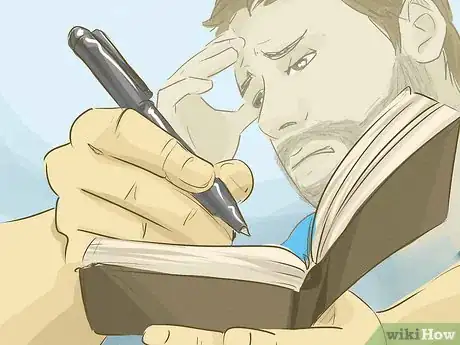

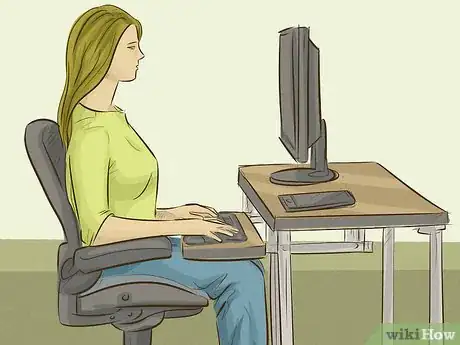
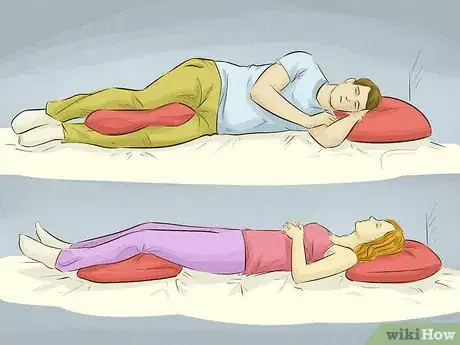
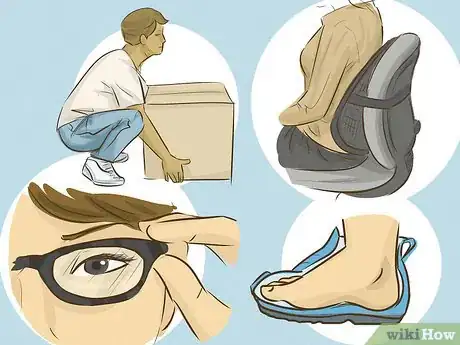
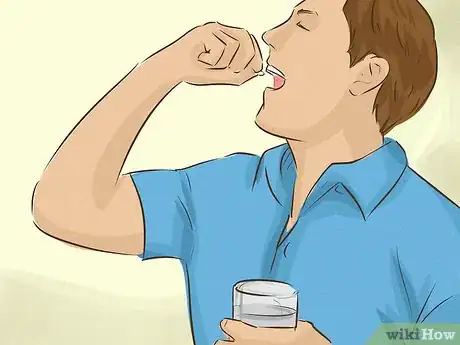


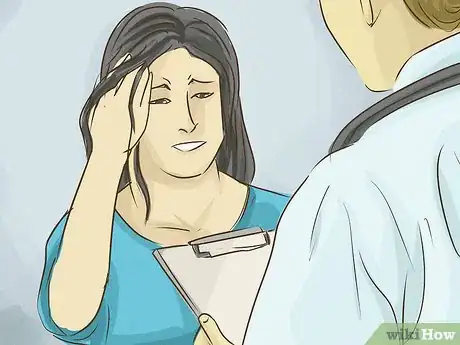
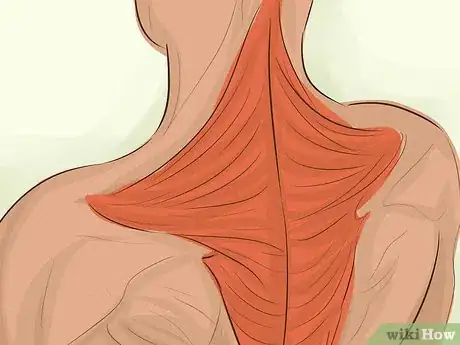
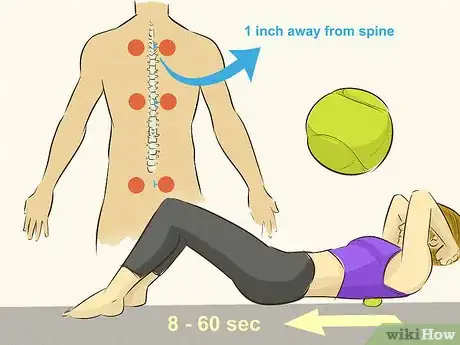
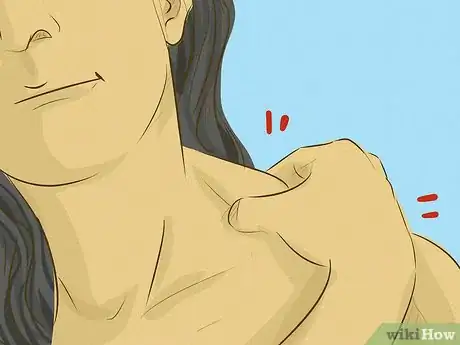

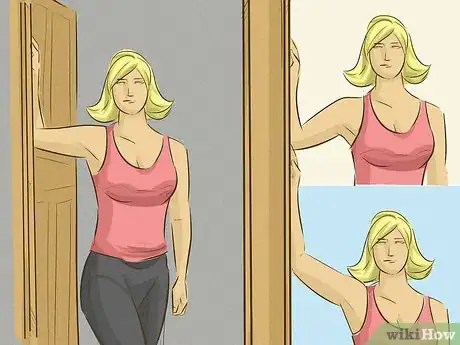
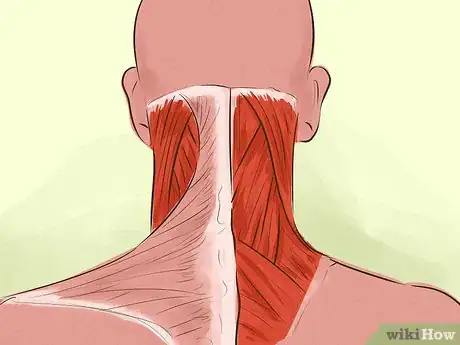
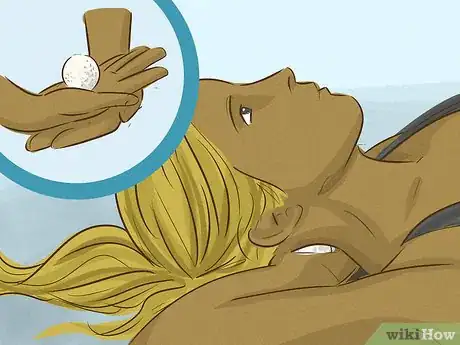
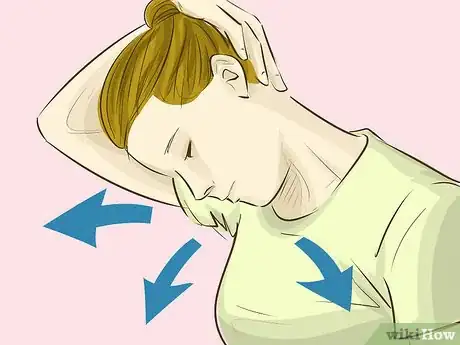
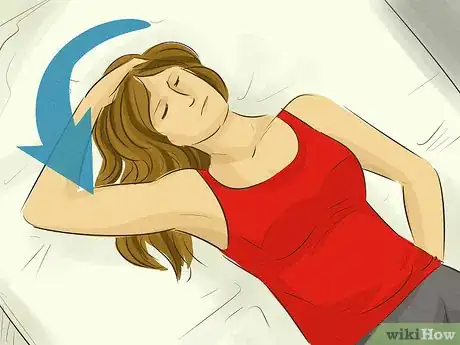
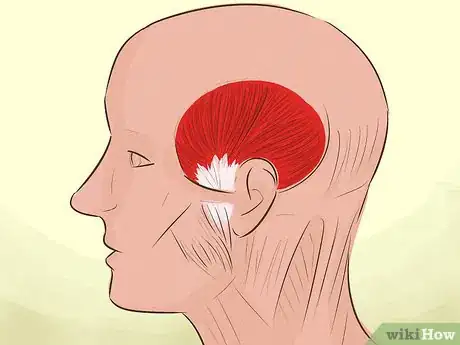
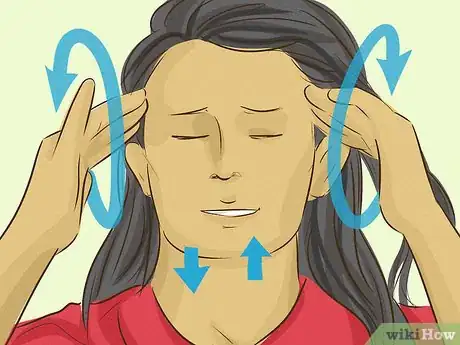
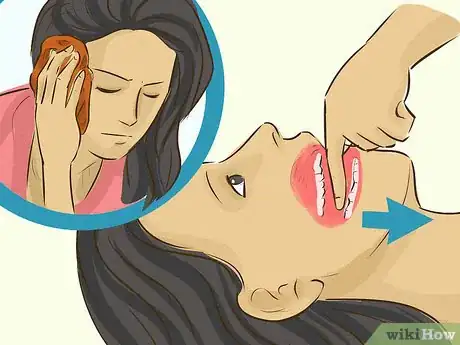
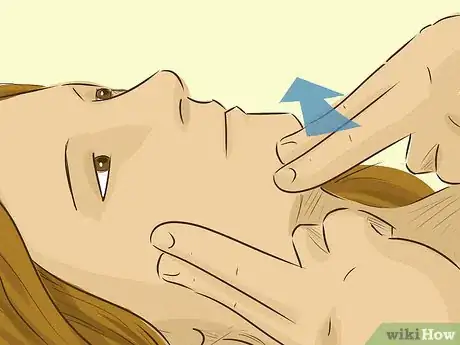
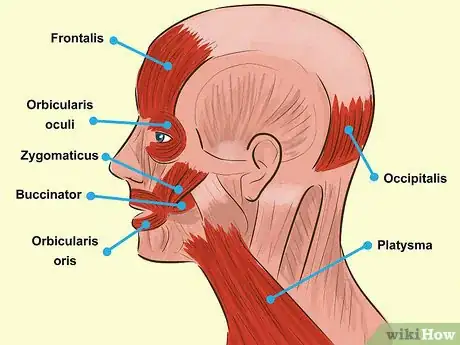

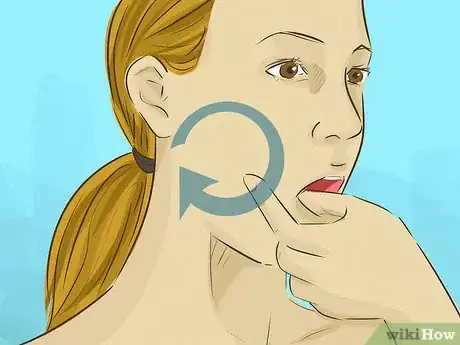
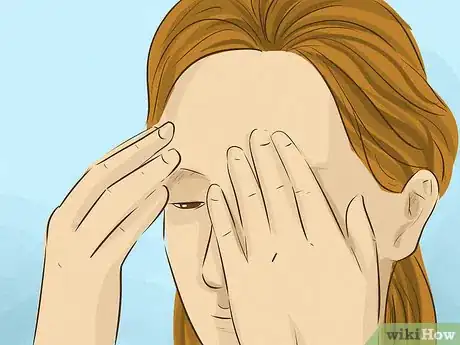

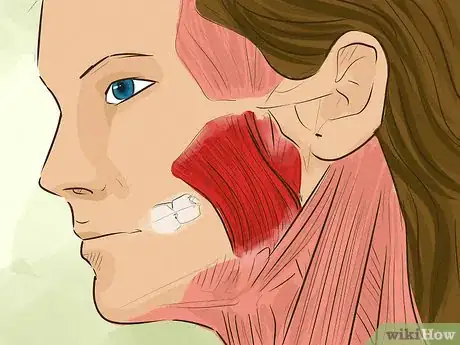
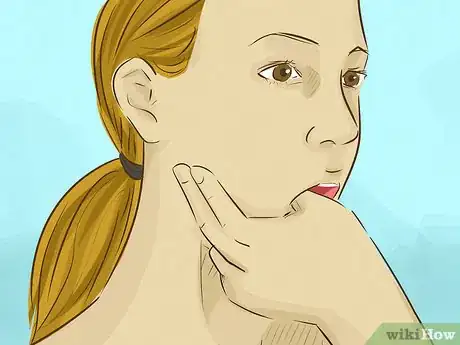
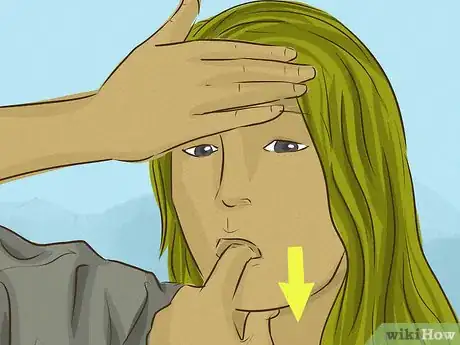

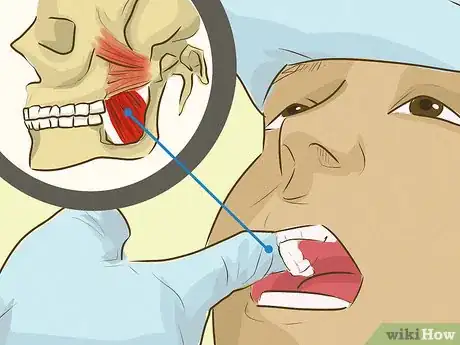
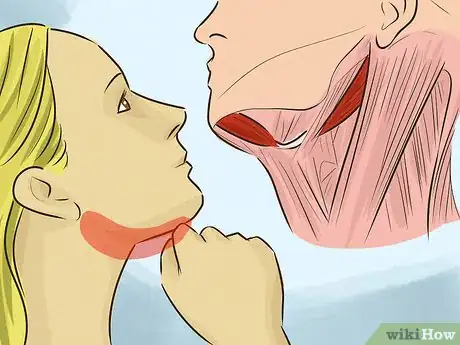
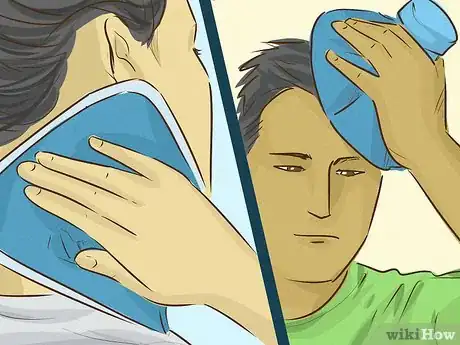
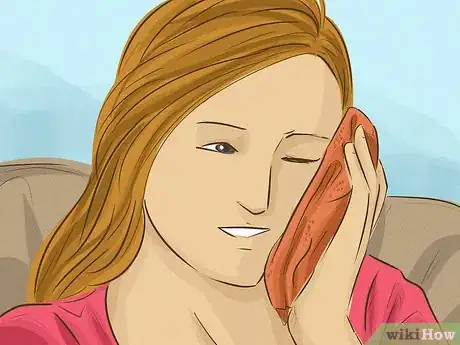
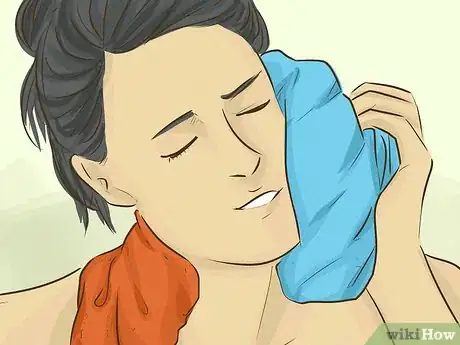

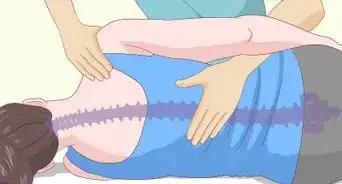
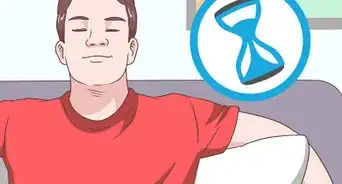
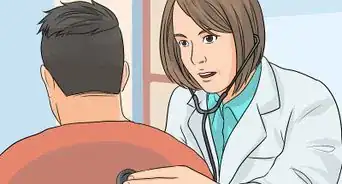

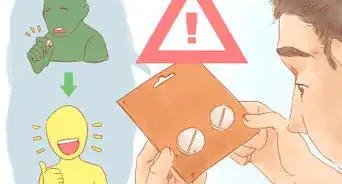
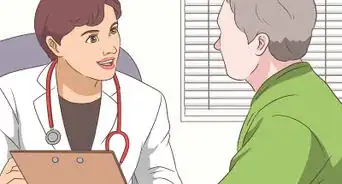
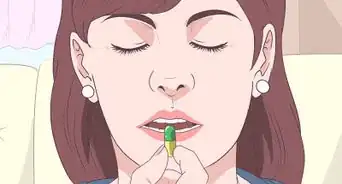
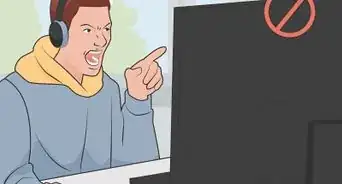
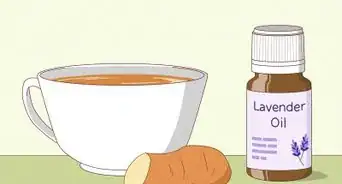
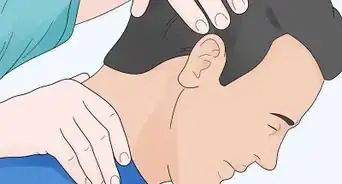
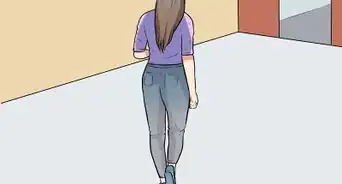
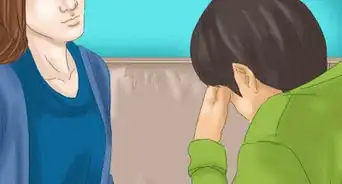
-Step-14.webp)









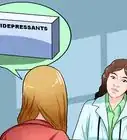

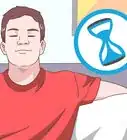
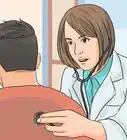



































Medical Disclaimer
The content of this article is not intended to be a substitute for professional medical advice, examination, diagnosis, or treatment. You should always contact your doctor or other qualified healthcare professional before starting, changing, or stopping any kind of health treatment.
Read More...